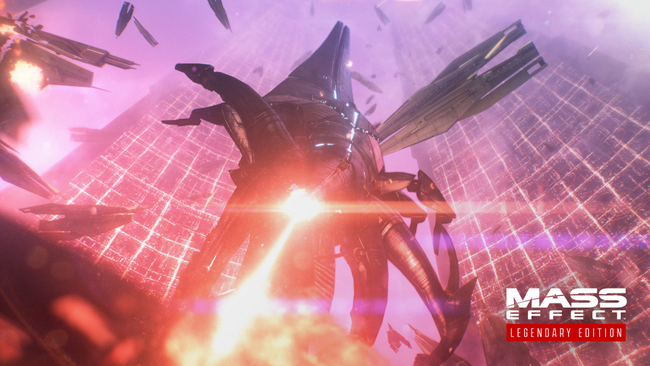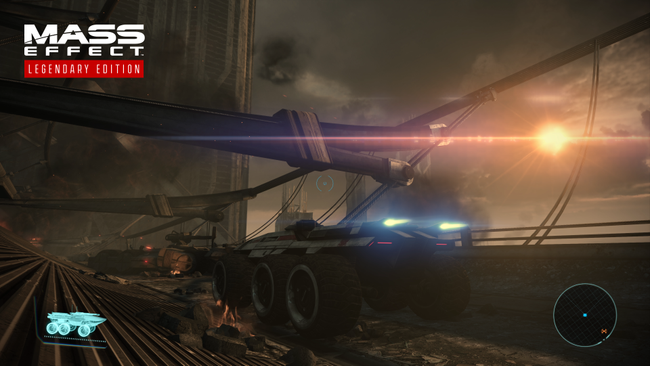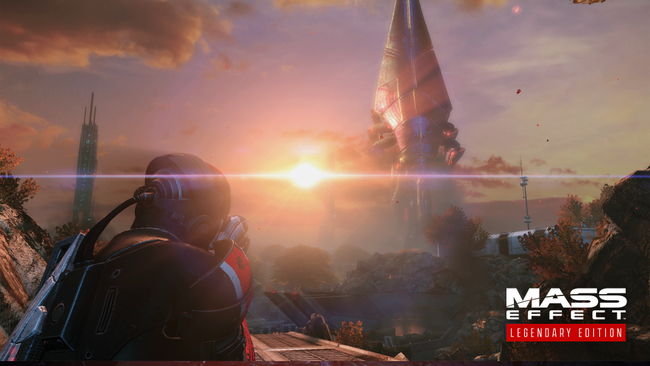Mass Effect Legendary Edition: what’s changed in Mass Effect 1
The Mass Effect Legendary Edition is in an interesting place, as BioWare’s sci-fi RPG trilogy changed in significant ways from game-to-game across the course of the trilogy. As soon as the 4K Remaster was announced, fans had one question: what are they going to do about Mass Effect 1?
So here’s the rub: broadly speaking, don’t expect major changes to the first Mass Effect game. Yes, it has some very different gameplay systems to the second and third games in the trilogy, but BioWare has made the decision to keep most of those systems the same in the Legendary Edition remaster, even though the game is very different to ME2 and 3.

Instead, you’ll find some systems have been tweaked and adjusted to bring them more in line with the latter Mass Effect games, but in general Mass Effect is still very much the same game it was in 2006. That means you can expect a more simplistic shooting experience than in the more cover-focused sequels, and broader RPG options. Mass Effect will have some of those sharper edges smoothed off, but will be very much the same game.
The logic, explained to us by key staff on the remaster, is to retain the feeling and the magic of the existing game, but to make small tweaks and changes for quality of life and to bring it a little closer to the other two games in the trilogy.
Of course, the Trilogy Remaster also features a visual upgrade for all three games - and being the oldest game, the original Mass Effect benefits far more than its successors. Expect all of the characters to look better, and in the case of ME1 some levels have had significant touch-ups to lighting, backdrops and ambient effects such as smoke and fire to make them ‘pop’ more. This page is focused on the gameplay changes, however.
On this page, we pick out our top five of the changes BioWare introduced to us during a presentation revealing Legendary Edition in full - as well as a list of other changes mentioned. This list is not exhaustive, but it mentions everything BioWare raised in a preview session.
Mass Effect 1 gameplay changes & differences in the Legendary Edition Trilogy Remaster
The first Mass Effect game is a very different game to the rest of the trilogy, and it is largely going to stay that way in the 4K Remaster of Mass Effect 1 that’s included in the Legendary Edition of the trilogy. The changes aren’t all visual!
Here’s our top five gameplay-focused changes in the Legendary Edition remaster of Mass Effect 1 - and then below that, you can find a list of some other changes BioWare flagged to us.

Our Top 5 Changes in Mass Effect 1’s Legendary Edition Remaster:
-
Fast Elevators, at last: in a demo of the PC version of Legendary Edition versus the original game, BioWare showed that a 52-second elevator ride from the Citadel Wards to the Presidium now only takes 14 seconds in the remaster. In addition, if dialogue is playing out during an elevator ride, an optional skip prompt will appear once the area loading the elevator ride hides is complete.
-
New Game+ No Longer Required for Level 60: for the Legendary Edition, BioWare has rebalanced the XP required to hit Level 60, the Level Cap. This is important because in the original game, New Game+ was required to hit level cap, and hitting level cap unlocked significant bonuses in Mass Effect 2. In the Legendary Edition, you’ll be able to hit 60 and max out your bonuses even on the first play-through.
-
No more Class-Based Weapon Restrictions: in the original ME1, not all classes can use all weapons. This has been rebalanced for the Trilogy Remaster, with restrictions removed. This means that, for instance, that the Biotic-focused Sentinel class can use weapons other than pistols - but they won’t be able to train and put skill points into those weapon classes, limiting their abilities. In addition, penalties to aim based on your class have been eliminated.
-
Aiming & Weapon Changes & Improvements: traditional RPG fans who struggle with the shooter elements will be pleased to know that ME1 now has a proper aim assist, including a ‘snap to’ enemy function, just like the latter two games. In addition, every weapon has been rebalanced and tweaked to try to give every weapon and every manufacturer “a unique feel”.
-
The Mako gets an upgrade: ME1’s infamous ground vehicle featured controls and physics that often defied logic to often hilarious impact, but these things have been tweaked for the Legendary Edition. There’s new physics, an alternative control scheme, an overall speed boost, and camera shake to make it feel more dynamic.

In addition, here’s some other changes you can expect to see and experience in the Mass Effect Legendary Edition version of Mass Effect 1, which is functionally the 4K Remaster of the game.
- Modernized HUD, more in line with ME2 & 3
- Improved AI for both enemies and squad member allies
- Boss Encounter improvements & rebalancing
- Mini game changes - mini-games are now the same across all platforms, and have reduced difficulty & frequency
- Control Scheme adjusted to be closer to ME2 & 3, including a dedicated melee button
- Smoother Camera Control, including when aiming down a scope
- Improved First Aid cooldown - presumably to make it quicker
- More Customization options - as well as there being one unified ‘Shepard’ character model throughout the series, be that default or custom, all customization options are now uniform across all three games. If an option was available in ME3, it now exists in ME1.
- PC version upgrades including proper native controller support, better keybinding options and 21:9 ultrawide support